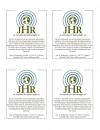Article #5 from Volume 1, Issue 1

Nari Corley-Wheeler
Guatemala’s judicial system is slowly being revitalized due to the increasing international awareness surrounding its history of genocide.
On February 1, Jillian Tuck and Emily Arfin spoke to a crowd of forty students at the University of Washington (hosted by Amnesty International, the Center for Justice and Human Rights, Latin-American Studies, and Journalists for Human Rights).
Tuck and Arfin represent only a slice of the growing international movement that is encouraging survivors of the atrocities to step forward and reclaim their voices that have been silenced. Affiliated with the organization Network in Solidarity with the People of Guatemala (NISGUA), Tuck was sponsored by the Unitarian Universalist Central American Network (UUCAN). As an accompanier, she was able to provide a presence for the survivors of Guatemala’s disconcerting past.
Impunity
Since the 1980s, indigenous villagers of Guatemala have witnessed crimes against humanity that have escaped punishment. Led by Rios Montt, the general of the Guatemalan Army (backed militarily and monetarily by the United States), the “Scorched Earth Campaign” of 1984-86 systematically eliminated indigenous communities, their livestock, and their fields. As a result, over 200,000 people were killed, 100,000 were “disappeared,” and 1.5 million displaced.
Rios Montt is still alive and resisting punishment.
Guatemala’s judicial system has not been able to act alone in bringing justice to a leader of genocide. It is the responsibility, then, of the international community to step forward and issue arrest warrants under universal jurisdiction, whereby some crimes are qualified as crimes against humanity.
Under universal jurisdiction, Spain was able to issue the arrest of eight other men responsible for crimes of torture, terrorism, illegal detention, and genocide in Guatemala.
Rios Montt evaded an arrest warrant as he continues to wield substantial political clout in Guatemala. He is able to maintain power as few in Guatemala City (the nation’s capital) believe him to have ever orchestrated the campaign or – for that matter – that those atrocities ever occurred.
In Solidarity
Tuck lived in nine different villages in the mountains of Guatemala over a period of ten months. With a few brief but harrowing anecdotes, Jillian illustrated how the indigenous suffered. An elderly man she befriended told her the story of his daughter. Found alive in a pile of dead bodies, his daughter lay naked – assumed to be raped.
Taking his daughter into his arms, he walked for two hours around the mountain side village to find medical aid. Within those two hours, his daughter had breathed her final breath and he was left to bury her remains. Other families fled the rural mountains during the attacks – journeys of traversing over four hours on back roads in a truck, four hours down the river, and two hours hiking uphill to reach their destination.
Tuck participated in street demonstrations against Montt’s continuing impunity. One of the witnesses she befriended, normally fearful and worn, was given an opportunity to be openly remonstrative for the voices that were discredited for twenty years – especially his own.
During the rally, what was left of his courage erupted in passionate cries against the man who stole his family, his land, and his past.
Interview
We were able to sneak in two brief interviews with Jillian Tuck and Emily Arfin between their numerous presentations.
Journalists for Human Rights:
Emily, what is Network in Solidarity with the People of Guatemala (NISGUA) and how is it related to the Guatemala Accompaniment Project (GAP)?
Emily Arfin:
NISGUA is the main program with offices in Washington; D.C. GAP is the accompaniment program of NISGUA. It is one separate program, but it is probably the dominant program right now.
GAP existed before it joined NISGUA, 7-8 years ago – and was originally formed as grassroots sponsoring communities all around the U.S. who would take on with sponsoring (helping with costs, raising money, providing information, recruiting) for the returning refugee community. Starting in ’92-93, the United Nations started to help those return from refugee status in Mexico to the hills of Guatemala, and they were given new pieces of land and new communities were formed.
These new communities wanted to have Accompaniers living with them because they did not feel secure and that’s where the accompaniment first began.
Journalists for Human Rights:
What is an Accompanier and what do they do?
Jillian Tuck:
The work of an accompanier is three or four-fold: acting as a dissuasive physical presence for the safety of the genocide witnesses from external threats; to be the eyes and the ears of the international community; to write and diffuse reports so that the situation is being monitored; and to educate – that’s why I’m here in Seattle!
So it’s important for me to be spreading the word because most of what’s happening or what has happened hasn’t been covered by mainstream news.
Part of what we’re doing is trying to get the word out through speaking tours, “Letters to the Editor,” advocacy, and through trying to get 1 out of every 100 students to sign up for the NISGUA listserv and stay updated on Guatemala in the future.
Journalists for Human Rights:
How were you received by the villagers?
Jillian Tuck:
People understand accompaniment and they would say “We know your work doesn’t end here. We know that you are going to bring our stories to the people in your own country and this is what I want you to tell them… You can cut a stock and peel kernels off of corn; but if one remains, it can be replanted.”
Now take that and bring it to your own country; and for me now I have some serious momentum to just shout it from the rooftops.
NISGUA: www.nisgua.org / UUCAN: http://www.uucan.org/
Labels: guatemala, human rights, nari corley-wheeler, newsletter, rios montt, solidarity, university of washington, uwjhr








